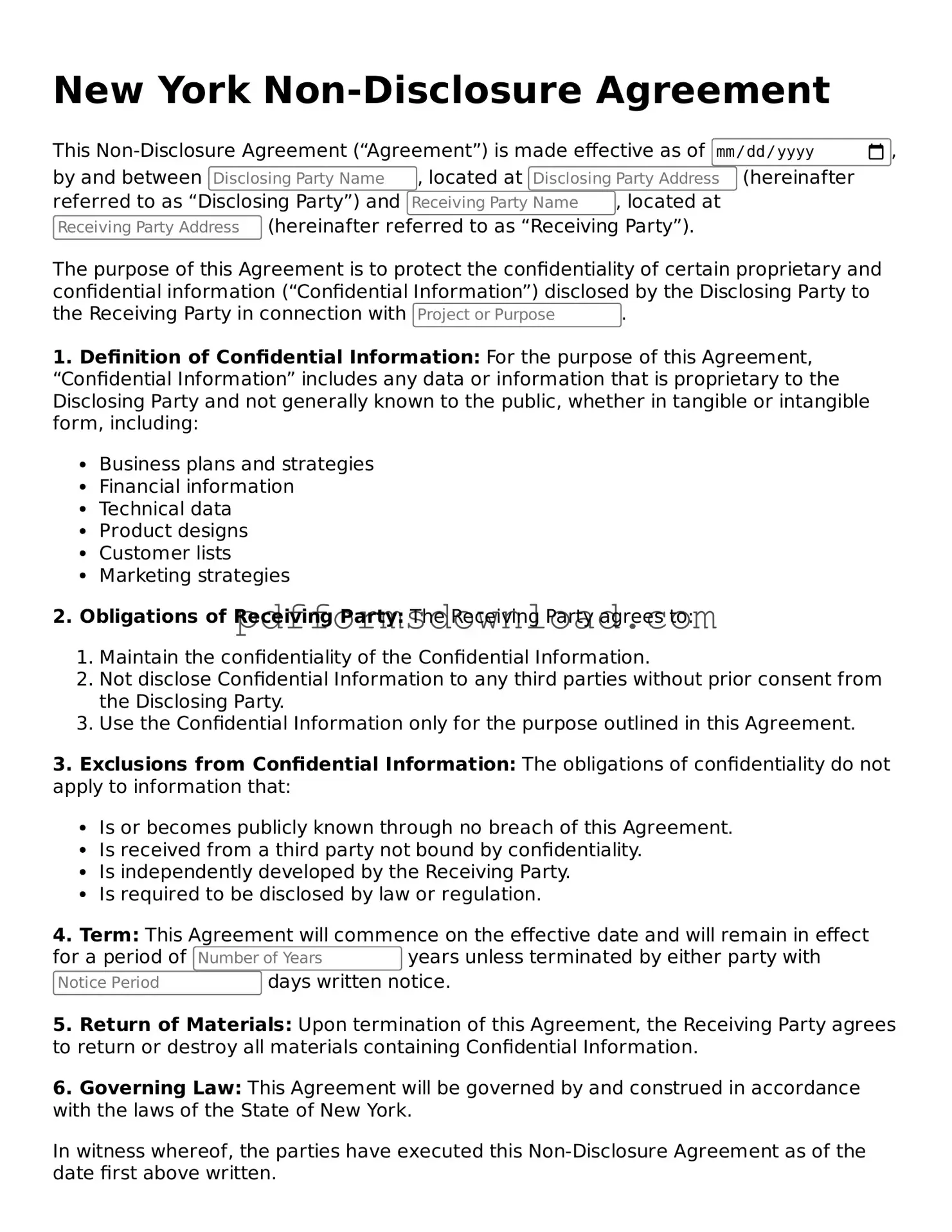What is a Non-disclosure Agreement (NDA)?
A Non-disclosure Agreement, or NDA, is a legal contract that protects confidential information. It ensures that one party does not share sensitive information with others. NDAs are commonly used in business settings to safeguard trade secrets, proprietary information, and other important data.
When should I use an NDA in New York?
You should consider using an NDA when you plan to share confidential information with another party. This can happen during business negotiations, partnerships, or when hiring employees. An NDA helps to ensure that your sensitive information remains protected.
What types of information can be protected by an NDA?
An NDA can protect various types of information, including business plans, customer lists, marketing strategies, financial data, and technical specifications. Essentially, any information that gives your business a competitive edge can be covered by an NDA.
Are NDAs enforceable in New York?
Yes, NDAs are enforceable in New York as long as they meet certain legal requirements. The agreement must be clear about what information is confidential and the obligations of both parties. Courts generally uphold NDAs if they are reasonable in scope and duration.
How long does an NDA last?
The duration of an NDA can vary. Some NDAs specify a fixed time period, such as two or five years, while others may last indefinitely. It’s important to clearly state the duration in the agreement to avoid confusion later on.
Can I modify an NDA after it has been signed?
Yes, you can modify an NDA after it has been signed. However, both parties must agree to the changes, and it’s best to document the modifications in writing. This ensures that everyone is on the same page and helps avoid disputes in the future.
What happens if someone breaches an NDA?
If someone breaches an NDA, the injured party may take legal action. This could include seeking damages for any losses incurred due to the breach. In some cases, the court may also issue an injunction to prevent further disclosure of the confidential information.
Do I need a lawyer to draft an NDA?
While it’s not strictly necessary to have a lawyer draft an NDA, it is highly recommended. A lawyer can ensure that the agreement meets legal standards and adequately protects your interests. This can save you time and potential legal issues down the line.
Is there a standard NDA template I can use?
Yes, there are many standard NDA templates available online. However, it’s important to customize the template to fit your specific situation. Using a generic template without modifications may not provide the protection you need.
What should I do if I have more questions about NDAs?
If you have more questions about NDAs, consider consulting with a legal professional. They can provide personalized advice based on your circumstances and help you understand the best practices for protecting your confidential information.
